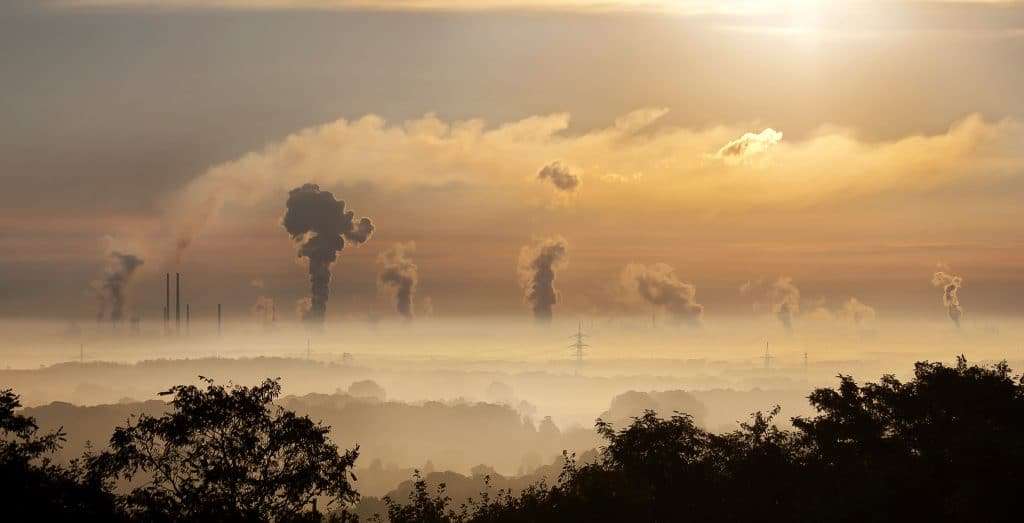As the world grapples with climate change and rising CO2 levels, recent findings shed light on the critical yet often overlooked role of plants in mitigating its effects.
A new United Nations report has painted a grim picture — Earth is on a trajectory towards a 2.5 to 2.9 degrees Celsius increase in global warming since pre-industrial times. This alarming rate surpasses the limits set by the 2015 Paris climate agreement, necessitating a 42 percent reduction in emissions by the end of the decade to maintain a 1.5-degree Celsius limit.
The Emissions Gap report by the U.N. Environment Programme reveals a concerning trend: carbon emissions from fossil fuels rose by 1.2 percent last year. This year alone, the daily global average temperature exceeded 1.5 degrees Celsius above mid-19th century levels on numerous days, with October and early November witnessing unprecedented highs. European climate service Copernicus, noted that last Friday, the globe experienced a 2 degrees Celsius rise above pre-industrial levels, which was a first in recorded history.

Anne Olhoff, lead author of the report from Denmark’s climate think tank Concito, expressed the urgency of the situation, stating, “Based on what science tells us, this is just like a whisper. What will be in the future will be more like a roar.” Inger Andersen, UNEP Director, echoed these concerns, emphasizing the need for a “massive and urgent shift” to prevent escalating temperatures and extreme weather events.
“This report underlines once again that the science is clear — our global carbon budget is shrinking year-on-year and time is rapidly running out if we want to meet the 1.5 or 2°C Paris Agreement targets,” Pierre Friedlingstein, Lead Author, Global Carbon Budget and Chair in Mathematical Modelling of the Climate System, University of Exeter, said in a statement. “This is a shared problem requiring coordinated action from all countries to rapidly reduce emissions and decarbonise its economy much faster than they are at present.”
Despite some progress, including the United States’ Inflation Reduction Act aiming to reduce carbon dioxide emissions significantly by 2030, the global outlook remains challenging. Antonio Guterres, United Nations Secretary-General, described the emissions gap as “a canyon littered with broken promises, broken lives and broken records.”
In stark contrast to these dire predictions, a study led by Dr. Jürgen Knauer of the Hawkesbury Institute for the Environment at Western Sydney University offers a glimmer of hope. Published in Science Advances, the research suggests that the world’s plants may have a greater capacity to absorb atmospheric CO2 than previously estimated. Dr. Knauer highlights the importance of understanding plant physiological processes in photosynthesis, which play a crucial role in carbon fixation and mitigating climate change effects.
“Plants take up a substantial amount of carbon dioxide every year, thereby slowing down the detrimental effects of climate change, but the extent to which they will continue this CO2 uptake into the future has been uncertain,” Dr. Knauer said in a statement.

“What we found is that a well-established climate model that is used to feed into global climate predictions made by the likes of the IPCC predicts stronger and sustained carbon uptake until the end of the 21st century when it accounts for the impact of some critical physiological processes that govern how plants conduct photosynthesis. We accounted for aspects like how efficiently carbon dioxide can move through the interior of the leaf, how plants adjust to changes in temperatures, and how plants most economically distribute nutrients in their canopy. These are three really important mechanisms that affect a plant’s ability to ‘fix’ carbon, yet they are commonly ignored in most global models,” Knauer added.
Silvia Caldararu, assistant professor at Trinity’s School of Natural Sciences, points out that this potential should not detract from the urgent need to reduce emissions. She emphasizes that while nature-based solutions like reforestation can significantly impact, they cannot be the sole strategy in combating climate change. The study underlines the critical role of biology in climate models, suggesting that current models may underestimate the resilience of vegetation to climate changes.
Caldararu says it is likely that we are currently “underestimating climate change effects on vegetation as well as its resilience to changes in climate.” She says we often think about climate models as being all about physics, but notes that biology plays “a huge role” and it is something that we really need to account for.
“These kinds of predictions have implications for nature-based solutions to climate change such as reforestation and afforestation and how much carbon such initiatives can take up,” she says. “Our findings suggest these approaches could have a larger impact in mitigating climate change and over a longer time period than we thought. However, simply planting trees will not solve all our problems. We absolutely need to cut down emissions from all sectors. Trees alone cannot offer humanity a get out of jail free card.”
Related on Ethos:


